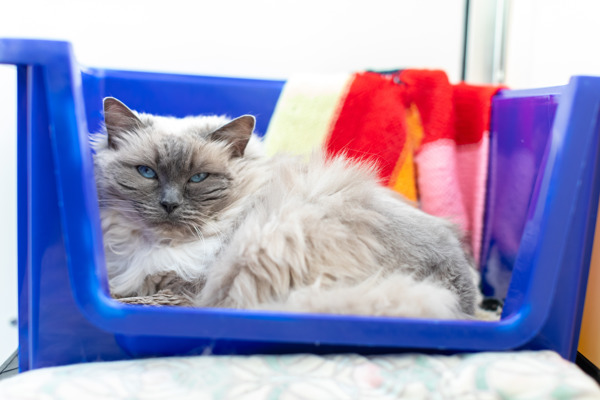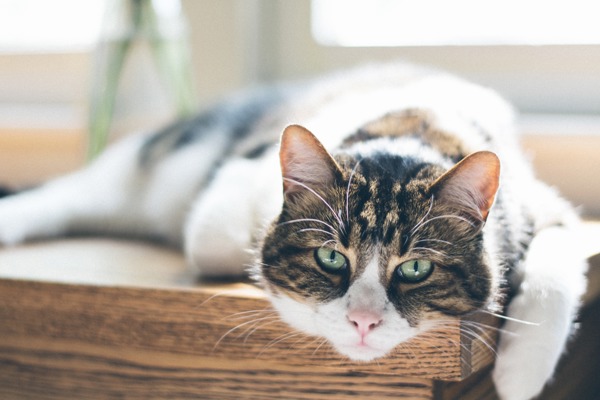Discover the history of cat breeding and where cat breeds come from
Ever wondered why some breeds of cat look so dramatically different from others? Registered Veterinary Surgeon Sarah Elliott explores the domestication of cats and the origins and ascent of certain cat breeds.
From wild hunters to pampered pets
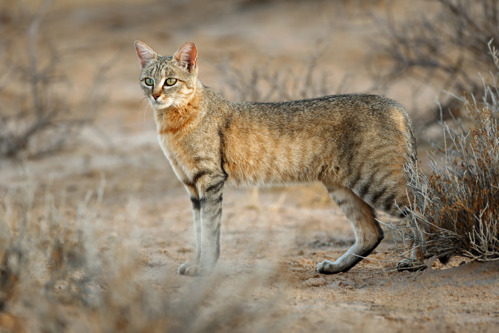
All domestic cats today are believed to descend from the African wildcat, a predator that’s been around for between 10,000 and 14,000 years. Unlike with dogs, cats have changed very little throughout the centuries. Mainly because they were already great at what they did: hunting rodents.
Humans and cats started living in close quarters because of cats’ excellent ability to hunt rodents and keep them away from food stores. And since cats were already built for the job, we didn’t need to selectively breed them. Over time though, their charm, curiosity and smarts won us over and we started keeping them as pets.
The birth of breeds
It wasn’t until the 19th century that people in the Western world started breeding cats for certain looks and behaviours. Around this time, pedigree cat shows became popular. People began breeding cats for specific ‘visually pleasing’ traits.
This is where we start to see the concept of pedigree cats, with breeders trying to create the ‘perfect’ version of a breed according to set standards. And just like with anything designed for aesthetics, this came with some unfortunate downsides...
Beauty comes at a cost
To meet breed standards, cats were bred to enhance specific features, sometimes to extremes. This has led to some dramatic shifts in appearance. For example:
- Siamese cats. ‘Old style’ Siamese cats had rounder faces and stockier bodies. Modern Siamese are super slim with long legs and triangle-shaped heads
- Persian cats. Some ‘hypertypes’ of this breed are being bred with increasingly flatter faces. This affects their ability to breathe and eat comfortably
This trend toward extreme features can lead to serious health problems.
Health problems in pedigree cats
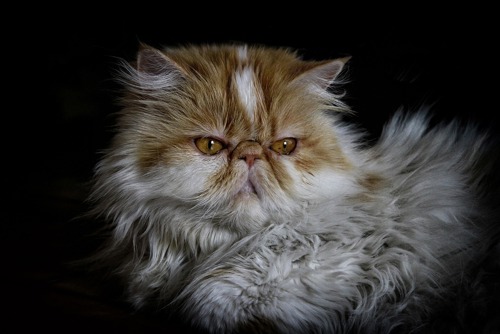
You might have heard of health issues in certain dog breeds. The BBC even pulled out of the Crufts dog show in 2009 because of it. But cats haven’t had quite the same spotlight on the issue.
Flat-faced (or brachycephalic) cats and dogs often suffer from:
- breathing difficulties
- eye irritation and constant weeping
- dental issues
Because many pedigree breeds come from a very small group of founding cats, genetic diversity can be limited. Related cats are closely bred, especially in the early days of developing a breed.
Many breeds of cat can be traced back to single individuals with unusual genetic mutations. For example, the Cornish Rex breed can be traced back to a single parent animal with a genetic mutation producing a curly coat.
This lack of genetic variation means inherited diseases are more common. For example:
- hypertrophic cardiomyopathy (a heart condition) in Ragdolls and Maine Coons
- polycystic kidney disease in Persians. In 2001, up to 49% carried the gene, but it’s thought that genetic testing has reduced the numbers of affected cats today
The rise of extreme physical characteristics
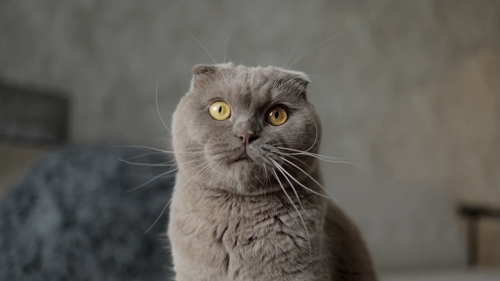
Certain physical characteristics are being selectively bred for, to achieve a ‘cute’ or ‘unique’ appearance. This is often at the expense of the cat’s health and comfort.
Some concerning examples include:
- short limbs. One example is the Munchkin cat. Their short legs are caused by a genetic defect that can be lethal. Many kittens die at birth. Survivors often suffer from joint pain and mobility issues
- folded ears. Scottish Folds are a breed which has folded ears. Their folded ears come from a cartilage mutation that also affects their joints, leading to severe arthritis
- no tail. Manx cats are known for their lack of tails. As a result of this genetic defect, they can have spinal deformities that cause lifelong pain.
- hairlessness. Cats with little or no hair can struggle with skin conditions. They may also lack whiskers, which cats need to help them navigate the world around them. The Sphynx cat is an example.
A lot of these physical characteristics get popular because of celebrity owners and social media hype. But behind the cute photos are cats who may struggle with even basic behaviours like jumping, climbing or grooming.
Find out more about extreme traits in cats.
Wildcat hybrids
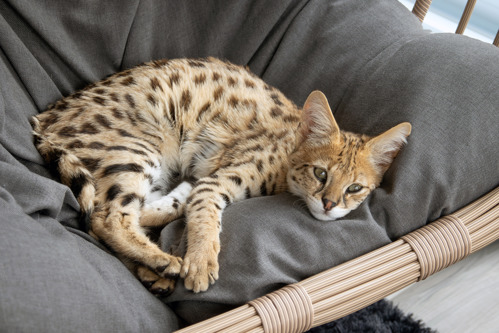
Another recent trend is wildcat hybrids. These are crosses between domestic cats and wildcats like the Serval or Jungle Cat . Wildcat hybrids include Savannahs, Chausies and Safaris.
They look exotic and come with a price tag to match, sometimes up to £15,000! But there are several problems with these breeds:
- first-generation hybrids can only be kept under license and in outdoor cages under the Dangerous Wild Animals Act
- even later generations can act more like wild animals than pets
- they may struggle to adapt to normal home life. In some cases, they can pose a risk of injury to owners, other pets and wildlife
Despite not being recognised by cat registration bodies like the Governing Council of the Cat Fancy (GCCF), their popularity keeps rising.
What can we do?
The good news? Awareness is growing. Many responsible breeders now test for genetic conditions and avoid breeding cats who carry harmful traits.
But there is still a huge amount of work to do to protect cats from harmful breeding practices.
In the UK, cat breeding is unregulated outside of Scotland. Cats Protection is calling for regulations across the UK to end the breeding of extreme physical characteristics in cats. You can sign our petition to help.
But it’s not just on breeders and the government, cat buyers have power too.
If you’re thinking about getting a pedigree kitten:
- do your research. Take a look at our advice for buying a healthy kitten safely.
- ask the breeder about health screenings
- think beyond looks. Prioritise the cat’s long-term health and comfort
Cats have come a long way from their wild ancestors. While breed variety can be fascinating, it’s important to remember that not all changes are for the better. Whether you're a lifelong cat lover or just curious, understanding the history and health of cat breeds helps us make better choices for our feline friends.
And if in doubt? Your average moggy is just as loving, and usually a whole lot healthier. Find a moggy looking for a new home.

